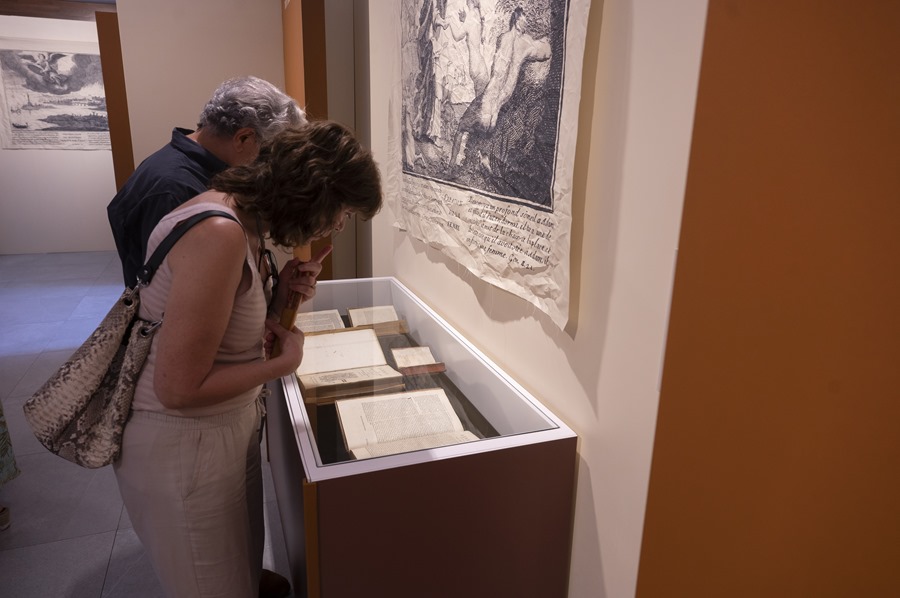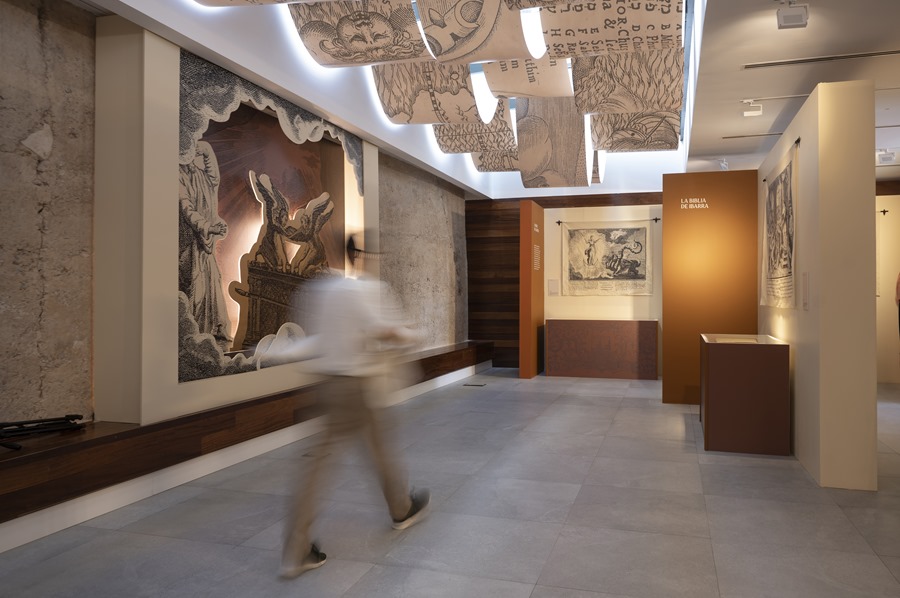
Santander (EFE).- The intellectual Marcelino Menéndez Pelayo collected throughout his life copies of the sacred bible that review the editorial history of this “book of books” since the 15th century, a set of “jewels” that can be seen until the end of August exposed in the Santander Cathedral Archive.
The sample brings together thirty-six copies edited between the Renaissance and the Enlightenment, published both in the classical languages (Hebrew, Latin and Greek) and in translations into various vernacular languages.
Its curator, the emeritus professor of Hebrew and Aramaic Studies at the Complutense University of Madrid, Julio Trebolle, presented the exhibition this Friday in a meeting with journalists together with the Bishop of Santander, Manuel Sánchez Monge, and the mayoress of the Cantabrian capital, Same Gem.
Selected works and prints
The Cantabrian philologist, historian and writer brought together 20 selected works in his personal library in Santander, divided into several volumes, which make up the 36 copies of the exhibition, which is completed with reproductions of engravings taken from those editions.
The scheme of the exhibition follows, as Trebolle has explained, the process of studying the Bible from the Renaissance to the time of Menéndez Pelayo, especially illustration.
The intention is to publish the biblical books, just as the classic books were published, and then translate them.
Then follows the Age of Enlightenment, a time when Bibles translated into Spanish appeared, at the initiative of King Carlos III and followed by Carlos IV.
Among these copies, Trebolle highlighted the royal polyglot bible by Arias Montano, printed in Antwerp (Belgium) by Plantino, which consists of eight volumes, five with texts in columns in Hebrew, Greek, Aramaic and Latin and three, collected in a single book, gather what its author called “Apparatus”.

It has also highlighted the presence of the Biblia del Oso, named after the printer’s mark on its first page, translated by Casiodoro de Reina and belonging to the Hieronymite Monastery of San Isidro del Campo, in Seville.
And he has underlined the importance of copies of the bible translated by Cipriano de Valera, that of Ferrara, and the Psalterium Quintuplex, by Jacques Lefèvre d’Etaples, from 1509 printed in Paris by Henri Estienne.
In the sample you can also see, among other copies, a bible commissioned by Carlos III in 1780; that of Félix Torres Amat, started with the authorization of Carlos IV and published in nine volumes between 1823 and 1825, or the Hebrew published by Augustus Hahn in 1839 in two volumes in the German city of Leipzig; are other of the publications included in this exhibition, in which there are also works in Latin and Greek.
The visit concludes with an encyclopedic work from the 18th century by Sabatier, which Trebolle has highlighted as “still valid” and includes the oldest Latin version preserved on the Cantabrian coast, since the arrival of the refugees from the Muslim invasion.
The Bible, a unique book
“The Bible is not just any book”, claimed the Bishop of Santander, who stressed that it is a “book with many books” originally written in various languages over many centuries and in different literary genres. “I hope that this exhibition will help some to approach these books and experience what faith means,” said Sánchez Monge.
The mayoress of Santander, Gema Igual, has highlighted the importance of the legacy of Menéndez Pelayo with “jewels” such as these bibles, kept in the intellectual’s library in the Cantabrian capital, currently municipal property and reference library.
The entry Expose the bibles of Menéndez Pelayo, “jewels in the history of the book of books” was first published in EFE Noticias.






